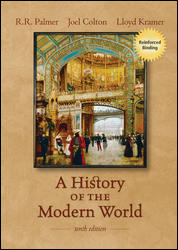
History of the Modern World, 10th Edition (Palmer)Chapter 18: The Russian Revolution and the Soviet UnionChapter OverviewAfter 1881 and the death of Alexander II, the reforming zeal of the tsars waned. Discontent grew among peasants, and also among the intelligentsia, who increasing formed revolutionary parties influenced by anarchist and Marxist ideologies. Tensions came to a head in 1917 when the tsar dismissed the Duma at a moment of economic crisis and deepening political divisiveness. The Bolsheviks were quick to seize control of the worker-led Soviets, in spite of resistance to their regime. The imperatives of civil war forced the Bolsheviks to withdraw from World War I, in a move that left the Allied powers bewildered. As the revolution advanced within the newly founded U.S.S.R., the Communist party attempted to rapidly modernize and industrialize the country, often with tremendous social costs. Stalin made the most notorious use of repression in implementing the early state-led economic plans and in enhancing his own rule. Internationally, the Soviet Union supported anti-colonial struggles around the world. The Russian Revolution of 1917 shares the historical magnitude of the French revolution. As a result of the revolution, the Soviet Union came to occupy a mediating role between the dominant west and the rest of the world. |  |















